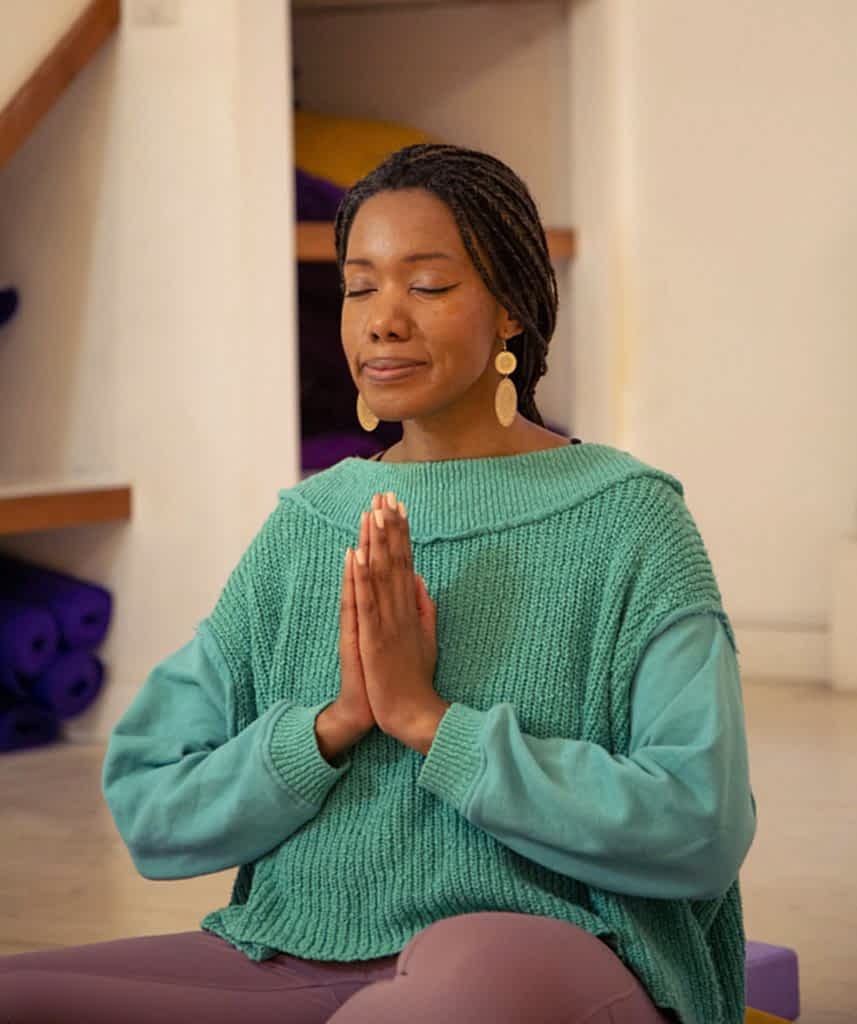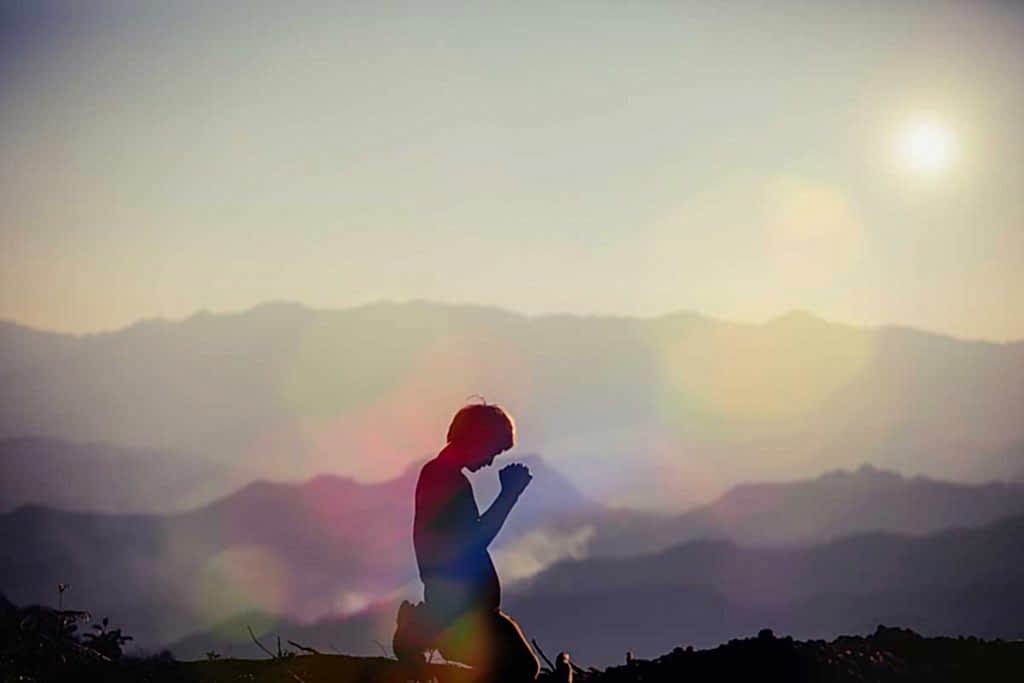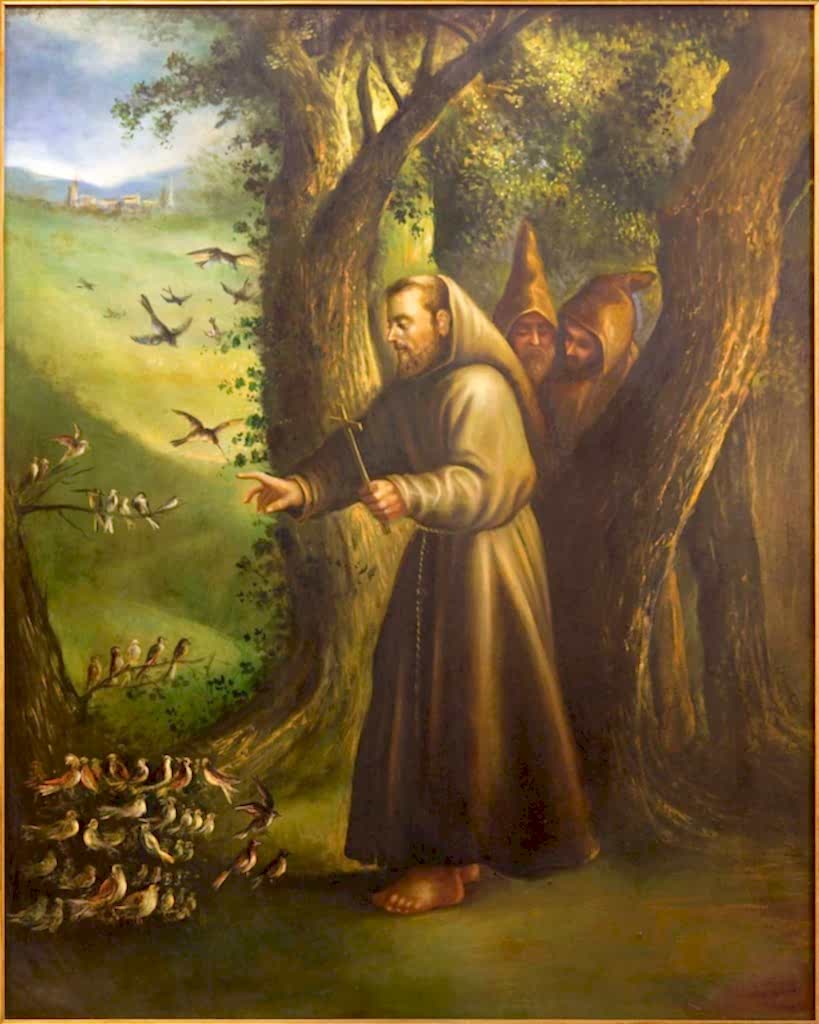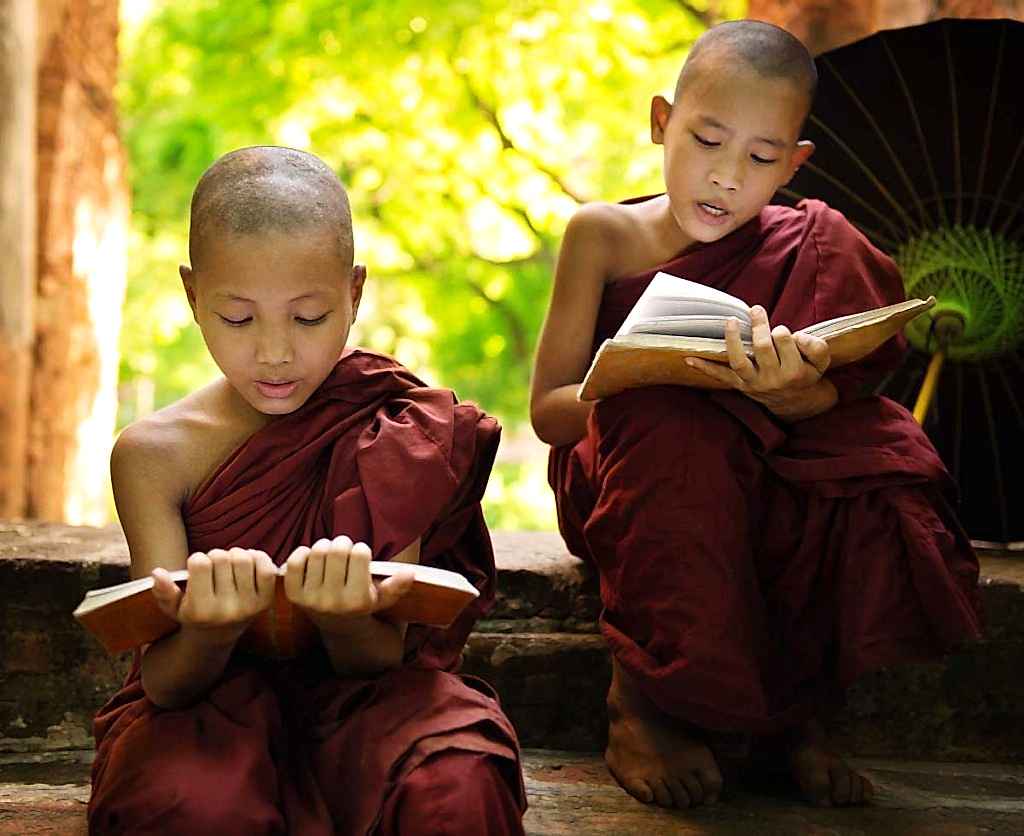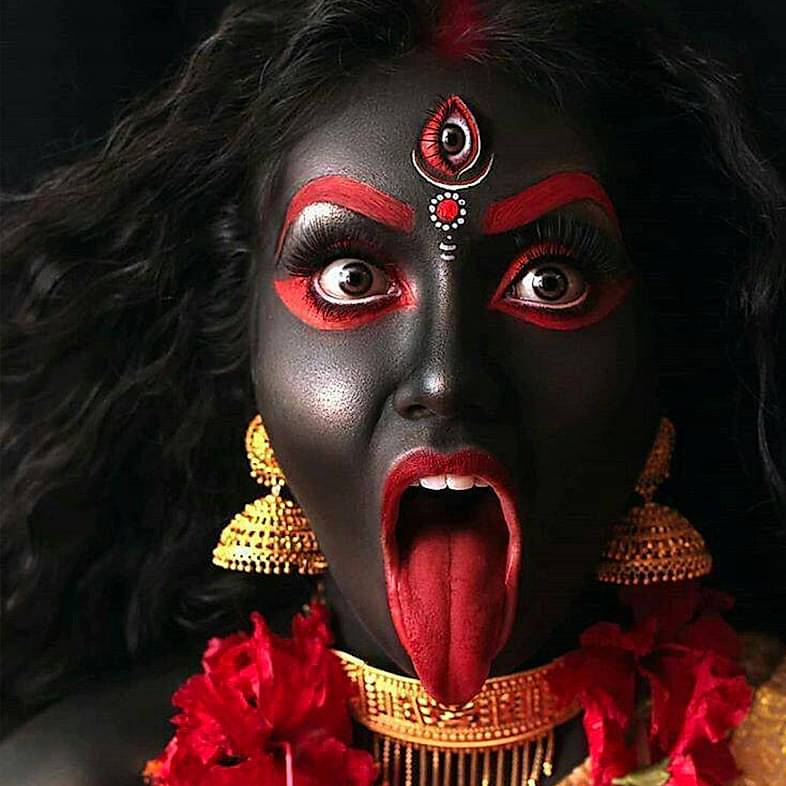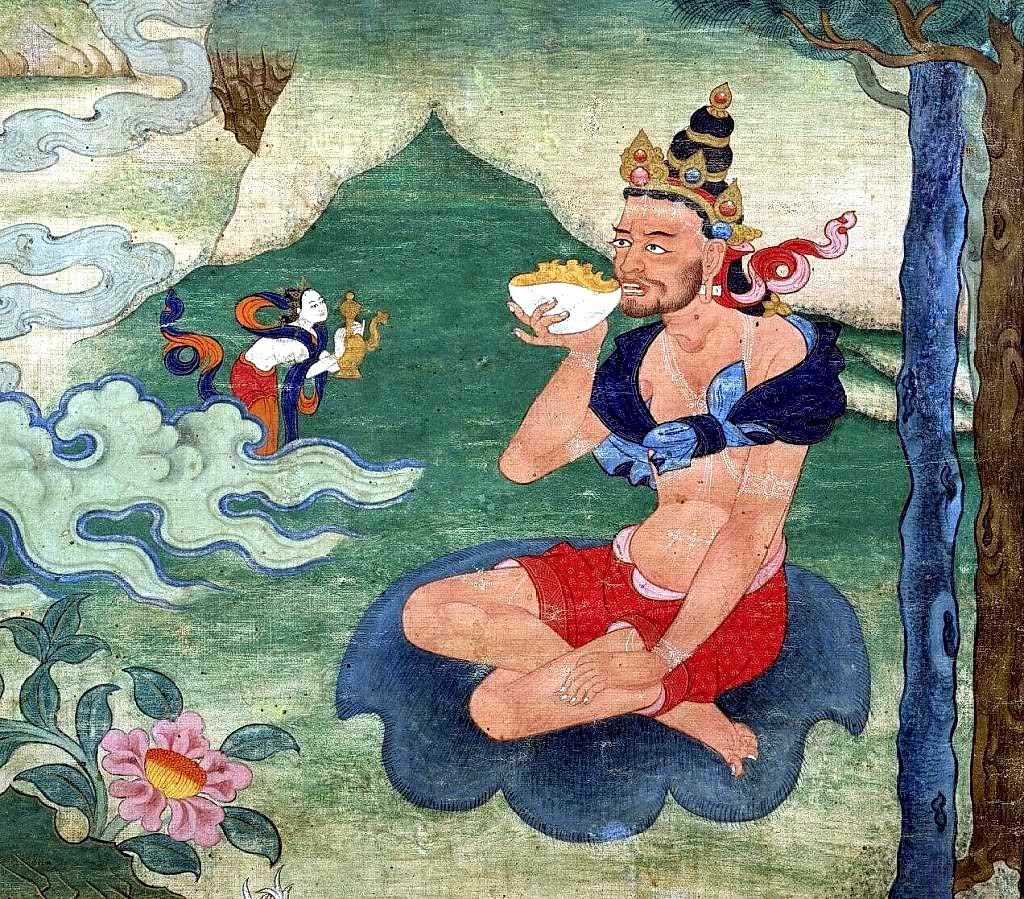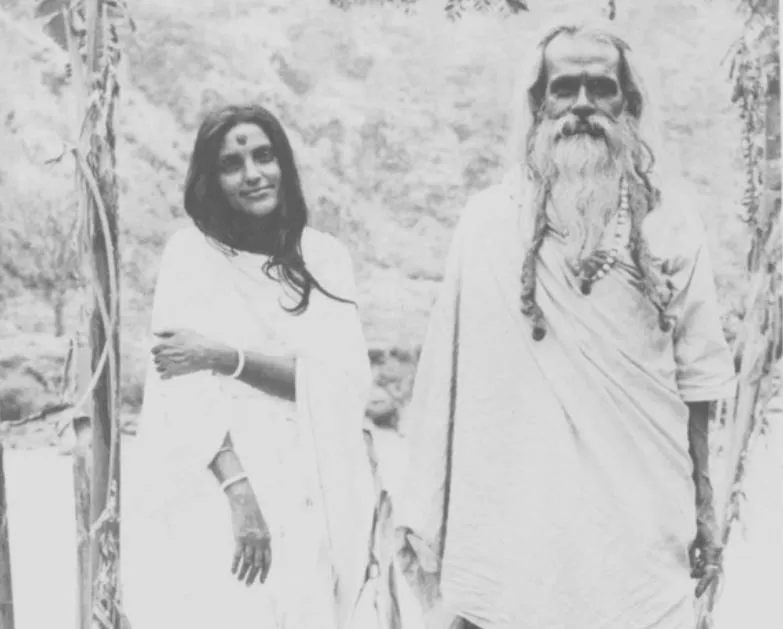Tribute to the Eternal Feminine & to the Feminine Mystery that exists in every woman
What the woman wants, and when it is good,
God wants it too.
Even for the uninitiated, the feminine nature has a mysterious resonance with the poetic sentiment. In human beings who aspire to discover their soulmate, this passionate search is fundamentally about discovering the polar opposite half that we lack. In reality, this quest illustrates the unconscious desire to achieve the androgynous state. In the realm of manifestation, some human beings sense, and others even intuit, that beyond the binary pulsation of plus-minus, yang-yin, solar-lunar, masculine-feminine, lies the mysterious unknown and infinite, or God the Father, who works incessantly.
I remember that when I started practising yoga, at one stage I had the opportunity to study a Tantric text, in which I discovered a phrase that appeared to be surprising to me at the time. Here is that sutra that I memorised: “If a practitioner of the Tantra system can understand the soul of a woman – due to their state of perfect identification, or Samyama, they will thus be able to know the world, together with the occult forces that reside beyond it, and at the same time they will be able to find the Almighty and Eternal Brahmin, God, who exists beyond this world.”
This phrase appeared to me as being banal, but at the same time fascinating and enigmatic. If it would be read in a superficial way, it would make you think of a kind of cliché that we meet in some age-old traditions. The ancient archetype of the anima mundi, or the Soul of the World, has been perpetuated in the esoteric traditions of the West since ancient times. On this it can be said that in a certain way, many people have the intuition of the fascinating, intimate connection of women with the nature of the World. It is worth remembering that it is no coincidence that the 21st card of the Tarot, which represents the World, has a beautiful naked woman in the centre as its symbol, that for the initiated, evokes the Mystery of Shakti.
Regarding the sutra that I quoted, it is necessary to add that when I read it, I had a flash of intuition of a truth that was hidden behind the apparent truth of those words. It was then that I began to intuit that there was undoubtedly a mysterious “something” beyond the World, and I might say that after this, the intuition settled in my consciousness forever. The enigma that was intuited in the sutra remained alive in me for many years, and even became a leading idea during my spiritual transformation that, over time, became a guiding beacon that helped me very much.
Any spiritual transformation undoubtedly hides countless paradoxes. As a whole, as soon as they begin to indicate the tortuous path of spiritual transformation, establishing milestones and essential stages ,most traditions of wisdom do not hesitate to advise, and even often dogmatically forbid, any form of association or companionship with women. During the period in which he composed hymns dedicated to the Mother Goddess, the great sage and yogi Shankaracharya wrote (because of his rejection of woman and femininity) the following: “Of all forms of birth, human birth is the most difficult to obtain; but even more difficult is to obtain birth in a male body.”
Whether they belong to the East or West, a large number of monastic traditions – which preach asceticism and renunciation as the only way to spiritual liberation – insist irrevocably on the need to distance yourself from everything that is directly or indirectly related to femininity. In their view, femininity is the cause of all sensual and worldly deviations, being also seen as the object of many temptations.
The sutra, however, spoke about the woman’s soul and contained a secret whose intimate and deep understanding could lead to a much greater knowledge. That sutra was referring to the knowledge that lies beyond this world and even beyond it all. But we know that behind the occult energies of this world there is nothing else but GOD THE FATHER, who is also the Absolute and the mysterious Unknown. The sutra revealed a great secret. Properly understood, the sutra sought to make us understand that knowing through perfect identification (SAMYAMA) the soul of a woman can also help us to know the mysteries of Creation and, more than that, can even help us discover GOD THE FATHER.
The message of the sutra made “something” profoundly resonate in my being. Afterwards, I often meditated on the enigmatic message of the sutra . Little by little, I felt that message literally invading my entire being as if it had awakened, in a certain way, every cell. Then, that ineffable state that arose gradually amplified and enlivened my being, often causing an intense and profound uplifting thrill to appear. When the state became more and more extensive and overwhelming, I meditated deeply upon it.
I found, over time, that what settled in my inner universe by evoking the magic of the words in the sutra was a great fecundity. It was, I could say, also an intense, poetic state. The sutra therefore awakened an intimate and ineffable state of poetry in my inner universe. At the same time, a spontaneous state of transfiguration appeared, and my perception of the whole world and even of my own being became completely different. In order to define it, I could say that the state was at the same time an ineffable, poetic experience. When I entered that state, I discovered mysterious rhythms and an indescribable “music” that circulated both through everything that existed in my being, as well as through what was outside of me. At the same time, a mysterious reality began to be revealed to me, which existed simultaneously beyond all partial realities and it made me experience something mysterious, ecstatic and intoxicating. The state that revealed itself to me was magical and at the same time poetic.
Later I realised, due to the intensity of that experience, which became more and more profound and clear, that many human beings seek to live and understand in a way, I could say poetically, beings, phenomena and things. Now I could say that at that time I undoubtedly entered deep states of beneficial trance and was often animated by an almost visceral need to experience the magic and poetry of Life. That indescribable twinning of magic and poetry, which I lived fully, revealed in my being a condition of the soul that penetrates the nature of all things, to discover in all of them the intimate vibration of all they have inside. The enigmatic and essential music conveyed by their form made me discover certain subtle messages that were hidden beyond them.
When I was intensely and deeply experiencing this state, I had the feeling that it is a complex and indescribable experience. Beyond all this, however, I had the feeling that I was experiencing something that was essentially feminine. This deeply feminine something that was contained in my inner universe appeared to me as a body, simultaneously new and old, which existed in my own body. That feminine something was a body of magic and poetry.
Through repetition and gradual deepening, this state triggered deep transformations in me. Later I came to realise that in fact there is no true philosophy, no religion and no true spirituality without poetry, without transfiguration, without magic and without conscious Eros. The Eternal Feminine, that in the East is expressed by the state of shakti, gives spirituality a certain poetry, magic, transfiguration and mystery.
Regarding these states that I previously described, I could also add that, around the age of nine, an extraordinary event made me aware of my spiritual destiny. I remember that at the age when many boys are tempted to masturbate, I experienced an inexplicable and even ecstatic exaltation in my whole body, which made me enter a mysterious and magical world – a world that, in my view back then, was imaginary and unlimited. That mysterious and magical land I entered was made up of gigantic, never-before-seen arabesques and brightly coloured swirls. At the same time, the experience made me sink into a state of timeless interiorisation. In this way, bodily instincts and sexuality were in a certain way replaced in me – in fact, I could say they were sublimated – through the means of this much more subtle and intangible Eros, which travelled more through my psychic universe rather than my senses, feeding me with magical states and images, and opening in me a mystical fondness.
Although I was quiet and solitary in nature, when I sometimes returned from school with two little girls of my age, I felt the urge to tell them some extraordinary stories. I realised, especially then, that the wonderful and charming world that existed in me could only be understood and shared by those two little girls, who I remember were very attentive to everything I told them. This intimate state of listening produced in me a kind of constant stimulation, which in this way fed an uplifting, euphoric aspiration of my unconscious Eros, which was in effervescence. Now I could say that then there was a perfect symbiosis between the receptivity of those two little girls and the inner, spontaneous activity of my creative imagination.
Back then, without realising it, through everything I was doing, I was already on my way to courting the MUSE of inspiration. At the same time, I was communicating with Eros and even realised – without knowing it – the first sublimation of amorous energy, in a complete state of innocence. Much later, I came to understand that Eros, in my case, was much more mobilised by my inner femininity than by my outer masculinity. The state of listening is, without a doubt, a feminine activity that invites sharing in the most natural way, as well as inviting a liberating activation of the creative imagination.
Human beings who nurture an intense state of spiritual aspiration end up living in a mysterious intermediary world, which is tangent to two complementary realities: the reality of the Visible World and that of the Invisible Worlds. The aspirational engagement on a spiritual path aims to reconcile these two worlds in the universe of the being, eventually making them mutually interchangeable. Their respective realities mix and melt at a certain point in the reality of the being in which they acquire a unique meaning.
Through her biological, vital and psychic nature, the woman lives in a similar world, between manifested and unmanifested, within which the perception and understanding of things, phenomena and beings have a character that is more aesthetic, I could say, than moral. I want to emphasise that here I use the word “AESTHETIC” in its widest and at the same time deepest sense: the Greek word AISTHETIKOS actually expresses an ineffable faculty of being penetrated, which makes us feel in an intense and profound way the harmonious unity of things and beings. This faculty is, we could say, predominant and inherent in femininity. The woman feels intuitively before she knows, the man wants to know before he feels, the woman lives to understand, the man must understand in order to feel that he lives.
For those who look with great attention at the surrounding reality, it is deeply significant that ethe world of poetry and art in particular is so permeated by the feminine presence. This aspect is valid even if most of the authors who have given humanity the greatest masterpieces belong to the male sex. It is worth asking ourselves if it is not through them that the feminine aspect manifests itself.
Today I could say that, thanks to a mysterious inner magnetisation, whose subtlety and magnitude grew over time, I gradually became aware of the importance of the androgynous state. This process was accompanied by an ever deeper awareness of the inner feminine. Through awakening the androgynous state, that feminine sensitivity which the masculine dexterity uses is then manifested in an ample and profound way.
Spirituality, art and poetry are, we could say, a continuity of nature within the human being. When they act together, in complete symbiosis, they “fertilise” the human soul. The feminine is not only related to nature in a symbolic way. More than that, the feminine is the keeper (most often unsuspecting) of nature’s secrets and at the same time the open-air altar of its essence.
Being at the same time the giver and nurturer of Life, the woman embodies the reality of the realised human nature. She has exercised this sacerdotal mission since the dawn of history, when she “conspired” with nature, sowing the first seeds that gave birth to agriculture; while men conspired by stalking game in the forests or hatching plans that would lead them to endless wars and the organised destruction of nature.
At the present time, especially through art, the feminine manifests itself in the world. In the East, the feminine accompanies aspirants along their spiritual journey, especially through the Tantra Yoga system. Achieving the glorious androgynous state is an alchemical fusion of the masculine and feminine, which brings forth a mysterious third entity that can only be enjoyed by those who have attained this extraordinary state.





